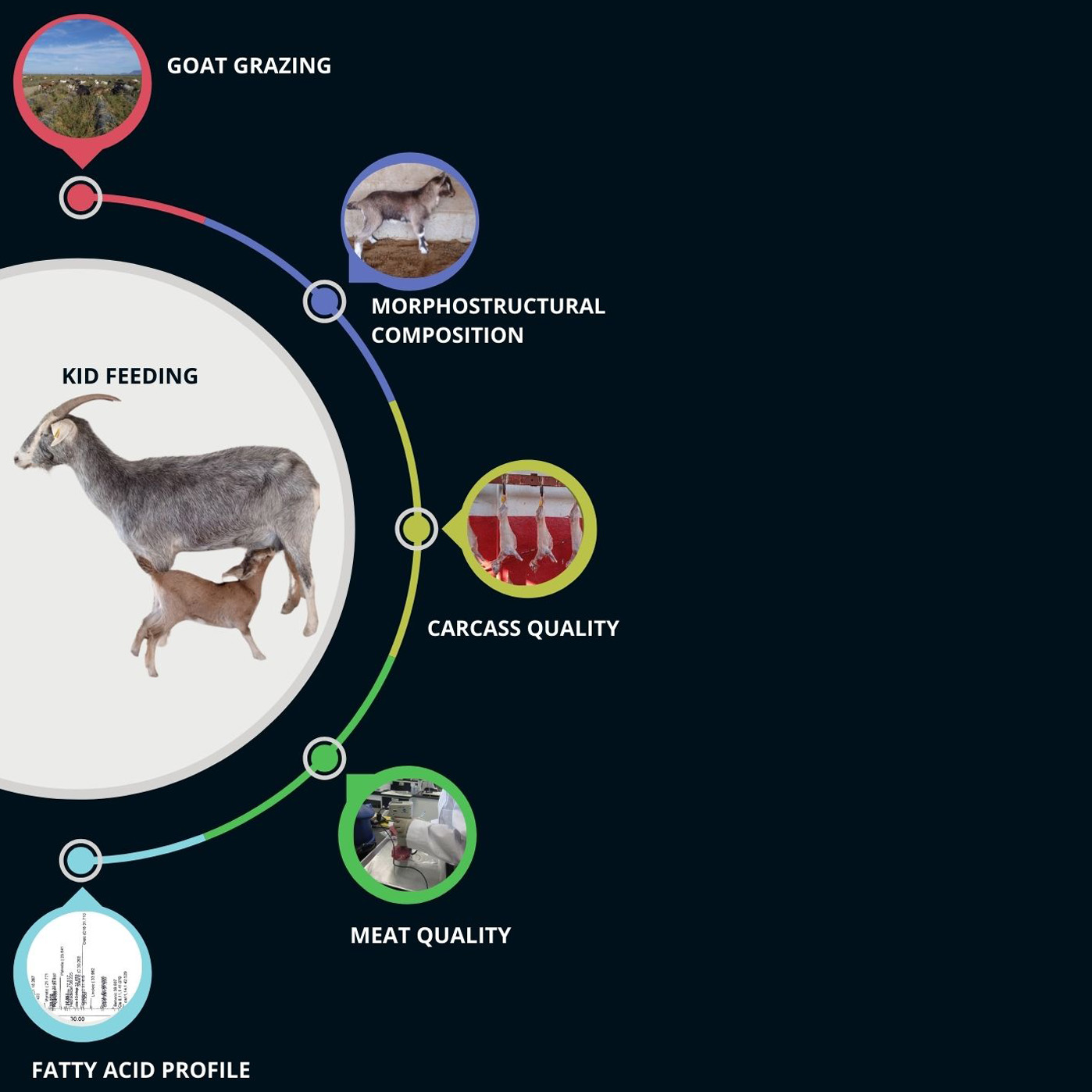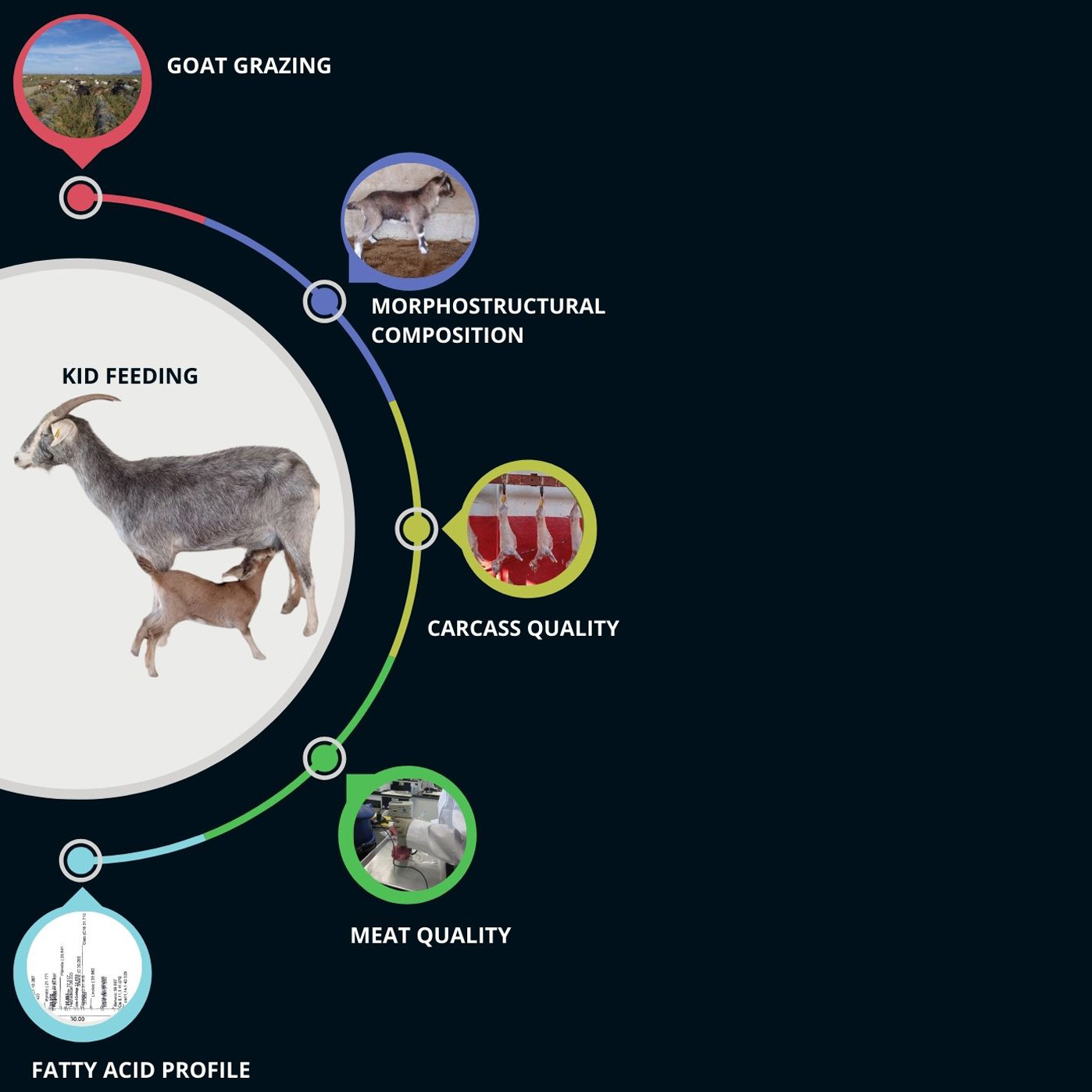Morphostructural composition and meat quality in local goat kids from the northeastern region of Mexico
DOI:
https://doi.org/10.48162/rev.39.129Palabras clave:
carne, canal, calidad nutricional, perfil de ácidos grasosResumen

Goat farming is an important activity in northern Mexico. In this sense, “cabrito” or kid goat is a typical regional dish with high economic and cultural value. However, information on the morphostructural composition and meat quality of these local specimens is scarce. Given this, the objective was to evaluate morphostructural characteristics, carcass and meat quality in local kids according to sex in the northeastern region of Mexico. For this purpose, 14 kids (7 males and 7 females) 57 days old were slaughtered. Morphostructural composition was evaluated with 22 zoomometric and phenotypic variables. Carcass characteristics were evaluated by considering different body structures, carcass yield and degree of fatness. Meat quality was determined by physicochemical characteristics, nutritional value and fatty acid profile. The sex effect was evaluated by t-test of independent means and Chi-square. Meat physicochemical characteristics, nutritional value and morphostructure of local kids were heterogeneous and showed no differences (P≥0.05) concerning sex. Carcass, kidneys, head, neck, rib and loin weights were higher in males than in females (P≤0.05). Fatty acids (FA) found in greater proportion were palmitic (C16:0), oleic (C18:1, n-9), stearic (C18:0), and myristic (C14:0). These FA comprised 80.85 % of the lipid profile of male meat and 76.83% of females. These results are the basis for future programs aimed to improve production systems. Differences found could shed light on future efforts on how to differentiate goat meat from this region of Mexico and enter new markets directly benefiting small producers.
Highlights:
- “Cabrito” or goat kid is a typical regional dish with high economic and cultural vale in north of México.
- Carcass structures like head, neck, rib and loin were higher in males.
- Fatty acids found in greater proportion in kid meat were palmitic (C16:0), oleic (C18:1, n-9), stearic (C18:0), and myristic.
- These fatty acids comprised 80.85% of lipid profile in males and 76.83% in females.
- Kid meat contains Docosahexaenoic acid (DHA) (C22: n-3), in quantities of 0.174 to 0.225 g/ 100 g of fat. This fatty acid is very important for brain development, as well as the cognitive and visual systems.

Descargas
Publicado
Número
Sección
Licencia
Derechos de autor 2018 Revista de la Facultad de Ciencias Agrarias UNCuyo

Esta obra está bajo una licencia internacional Creative Commons Reconocimiento-NoComercial-CompartirIgual 3.0.
Aquellos autores/as que tengan publicaciones con esta revista, aceptan las Políticas Editoriales.



